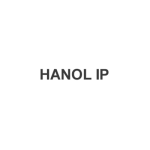In 2015, the Korean Supreme Court cleared the patent eligibility hurdle for dosage regimen inventions, and announced that dosage regimens are patentable if they satisfy other patentability requirements including novelty and inventiveness (Supreme Court en banc decision 2014Hu768, May 21 2015). In the first case where the inventiveness of a dosage invention was at issue (Patent Court decision 2015Heo7889, February 3 2017), the Korean Patent Court denied inventiveness on the ground that optimising dosage regimens to achieve the reduction of toxicity or improvement of efficacy is considered routine experimentation or work of a person having ordinary skill in the art (PHOSITA). This shows that Korea has a strict standard for the inventiveness of dosage regimen patents.
However, the Korean Supreme Court has recently issued a notable decision in favour of a patent holder, Novartis AG, after reviewing the inventiveness of a dosage regimen invention (Supreme Court decision 2014Hu768, May 21 2015).
Background
The patent at issue (Korean Patent No. 121596) is directed to a pharmaceutical composition for transdermal administration comprising rivastigmine, which is the (S)-enantiomer isolated from a racemate of N-ethyl-3-[(1-dimethylamino)ethyl]-N-methyl-phenyl-carbamate.
Claim 1
A pharmaceutical composition for systemic transdermal administration, comprising the (S)-N-ethyl-3-[(1-dimethylamino)ethyl]-N-methyl-phenyl-carbamate of formula 1, in free base or acid addition salt form, and a pharmaceutical carrier or diluent suitable for systemic transdermal administration.
Novartis AG developed a rivastigmine transdermal patch (Exelon patch) that can be administered transdermally for treating Alzheimer's disease, which is covered by this patent. SK Chemicals, the accused infringer, challenged the validity of the patent, arguing against its inventiveness.
Rulings on inventiveness
The Intellectual Property Trial and Appeal Board (IPTAB) recognised the inventiveness of the Novartis patent on the ground that upon reading the cited prior art reference which discloses the racemate RA7, in combination with common general knowledge (CGK), a PHOSITA can sufficiently recognise the presence of the active enantiomer thereof. However, since the prior art reference fails to provide any suggestion or recognition of the transdermal administration route, it is not predictable or foreseeable to a PHOSITA whether the active enantiomer of RA7 has remarkable transdermal absorption.
On appeal, the Patent Court overturned the IPTAB's decision, holding that upon reading the cited prior art reference in light of CGK, a PHOSITA can easily recognise the transdermal absorption of RA7 and rivastigmine, and there is no ground to acknowledge such transdermal effect as a quantitatively remarkable or qualitatively different effect. Specifically, when determining whether the effect can be considered remarkable, the following reasoning was used: it is well known in the art that a drug suitable for transdermal administration has physicochemical properties of high lipid solubility, low molecular weight, appropriate melting point, etc., and there is a need to develop a transdermal dosage form for drugs having short half-life and a narrow therapeutic window; prior art references disclose that RA7 has such properties, and it is not recognised that there is a difference in the transdermal effect between rivastigmine and RA7 since the transdermal absorption depends on the physicochemical properties, and rivastigmine merely differs from RA7 in its optical property.
However, the Supreme Court reversed the Patent Court's decision, holding that the Patent Court seriously erred in judging the inventiveness, since it should be recognised that the use of "transdermal administration" is a "qualitatively different effect" which is unpredictable to a PHOSITA from the prior art reference in combination with CGK. In this decision, the Supreme Court found that the subject patent is directed to a medical use invention to provide a dosage regimen of transdermal administration, and clarified the legal principle for determining the inventiveness of dosage regimen inventions as follows:
"The process of pharmaceutical development ordinarily involves efforts to find the appropriate dose and dosage regimen to tackle technological challenges, such as enhancing efficacy and ensuring efficiency in administering medication; thus, in order to satisfy the requirement of the inventiveness of a medical use invention specified with a specific dose or dosage regimen, such dose or dosage regimen should be recognised to have a quantitatively remarkable or qualitatively different effect that is unpredictable to a PHOSITA from prior art reference in combination with CGK."
Specifically, the Supreme Court drew a different conclusion on the basis that the cited prior art reference merely describes that RA compounds may be administered via an oral or parenteral route, and fails to teach the effects resulting from the transdermal absorption of these compounds. Furthermore, it is difficult to recognise that the parenteral administration includes the transdermal administration since the acute toxicity experiments disclosed in the prior art reference were carried out for oral and subcutaneous routes only, and compounds exhibiting remarkable transdermal absorptivity may have physicochemical properties of high lipid solubility, low molecular weight, appropriate melting point, etc., but it cannot be assured that for the simple reason that compounds have such properties, they would have high transdermal absorption.
Korea is in line with other jurisdictions including the US and EU in that the patentability bar for dosage regimen inventions has been removed since 2015. Under current practice in Korea, dosage regimens are considered selection inventions when determining patentability.
The recent Supreme Court decision is noteworthy in that it was focused on the inventiveness of a dosage regimen invention, and first suggested the legal principle for determining inventiveness. The key point in the inventiveness of a dosage regimen patent resides in whether the effects resulting from the selected dosage regimen can be regarded as quantitatively remarkable or qualitatively different.
Min Son
Partner, Hanol IP & Law
HANOL Intellectual Property & Law
6th Floor, Daemyung Tower, 135, Beobwon-ro, Songpa-gu
Seoul, 05836
Republic of Korea
Tel: +82 2 942 1100
Fax: +82 2 942 2600












